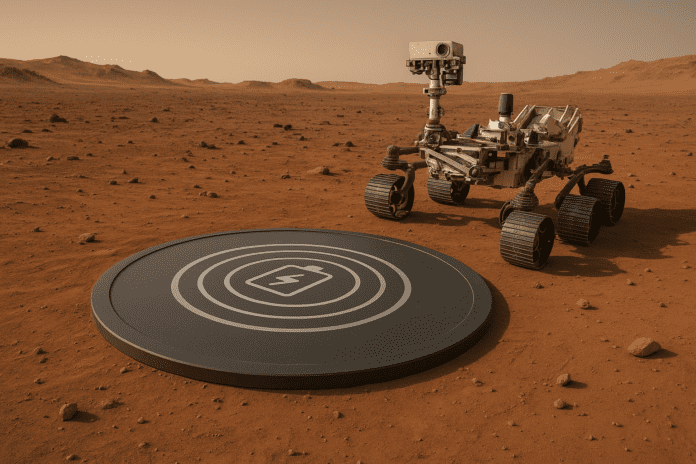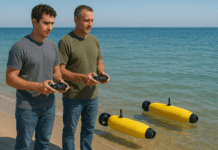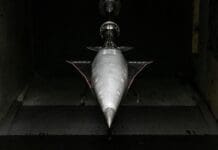This post is also available in:
 עברית (Hebrew)
עברית (Hebrew)
Supplying power to robotic explorers on other planets has always been one of the hardest problems in space engineering. Rovers operating millions of kilometers from Earth must function autonomously for years, in extreme cold, dust, and radiation — all while depending on limited energy sources. Now, researchers are exploring a solution that takes a cue from smartphones: wireless charging.
A new high-frequency Inductive Wireless Power Transfer (IWPT) system, developed by Bumblebee Power, could allow rovers to recharge without physical connectors. The concept uses electromagnetic fields to transfer energy between a charging mat and the vehicle, eliminating the need for mechanical docking ports that can wear out or clog with dust — a recurring issue for planetary missions.
Traditional systems, like NASA’s plutonium-powered generators, provide reliable energy but are expensive, complex, and constrained by finite fuel. Wireless charging offers a lighter and potentially longer-lasting alternative. The company’s system operates at higher transmission frequencies than existing inductive chargers, enabling it to deliver power over three times the distance and with greater tolerance for misalignment. This flexibility is essential in environments where precise positioning isn’t possible — for instance, when a rover needs to recharge on uneven Martian terrain.
According to Interesting Engineering, the technology also supports multi-device charging, meaning several units could draw power from a single base station, simplifying logistics for future lunar or Martian missions. In theory, a network of static chargers could sustain entire fleets of robotic vehicles exploring wide areas without manual maintenance.
Beyond space exploration, the same wireless power systems could have defense and homeland security applications. Autonomous vessels, field robots, or drones operating in remote or hazardous zones could benefit from contactless charging platforms, allowing them to stay operational for extended missions without human intervention.
Still at the proof-of-concept stage, the IWPT approach represents a shift toward more modular, resilient power systems for both space and terrestrial robotics. If successful, it could eliminate one of the last major physical constraints on autonomous exploration – keeping machines powered and moving, wherever they are.


























